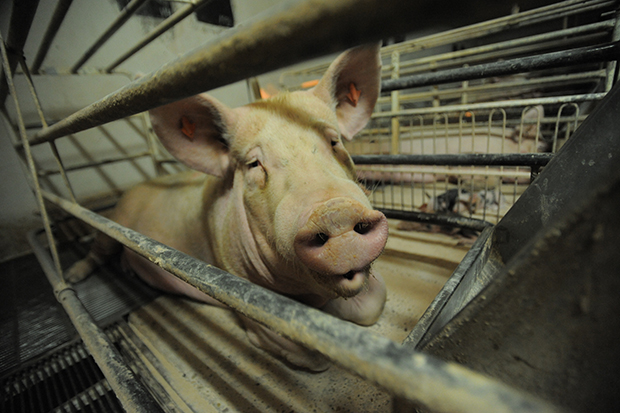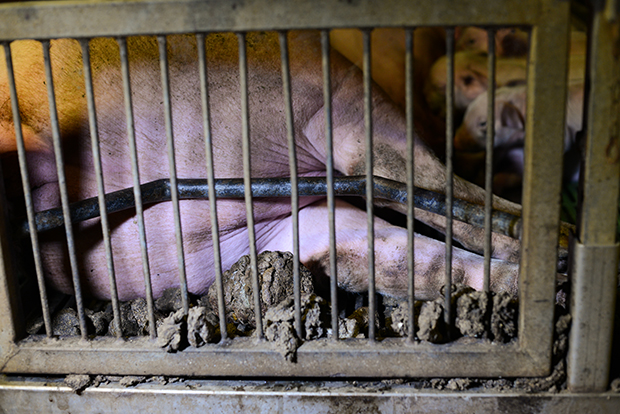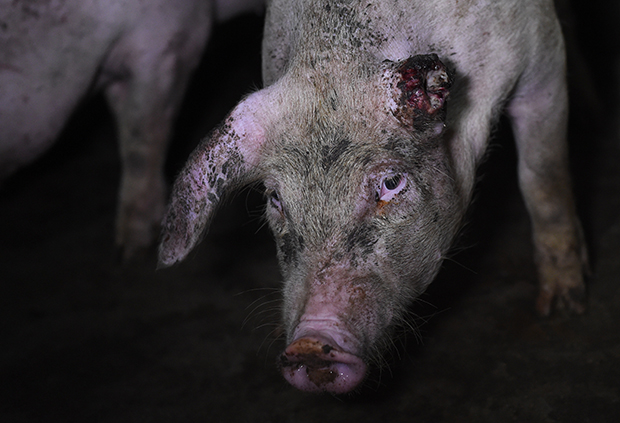Renowned photo-journalist Jo-Anne McArthur of We Animals Media has devoted nearly two decades to photographing animals in desperate circumstances – those who live inside farms, labs and cages all over the world. The photos that accompany this article were taken by McArthur inside industrialised pig agriculture in Europe.

This pig, photographed in a Spanish farm, is a “breeder pig”. Breeder sows are artificially inseminated and give birth to a litter twice or three times a year. She’s kept behind bars in a crate, where she cannot turn around and has trouble lying down. When her babies are born they can suckle, but she is unable to interact with them.

If there is a baby who has strayed behind her, she cannot even reach over and pick her up. If there is a dead baby next to her, there’s nothing she can do but watch it lying there.

It is common for their urine and feces to build up under captive pigs, causing them to develop respiratory problems due to the ammonia inside the farms.

In the extreme conditions of their confinement, pigs feel enormous pressures that can result in mental illnesses. Some literally go insane, and frustration spilling over to violence is common. This pig has lost an ear, most likely in a fight.
A pig’s intelligence is partly demonstrated through their curiosity. When she is inside factory farms, McArthur notices that pigs will make eye contact with her as she passes. “They’re asking questions,” she says. “They have no answers. They don’t know what happens next. They know we— humans— are the ones who hold the key. We’re the ones who move them from crate to crate. We’re the ones who take away their young.”
“I wish death for them, knowing that that will likely be the only release they have from pain.”
For more images see the article ‘Jo-Anne McArthur: the most important animal photographer of our time’

